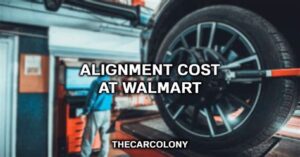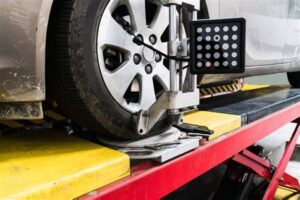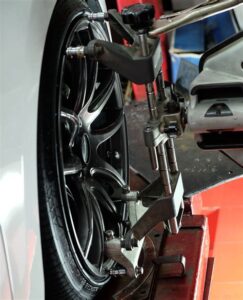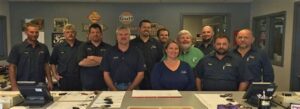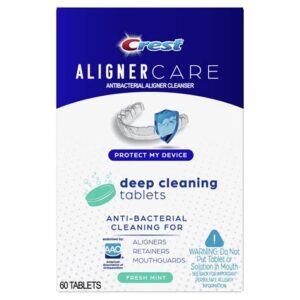Is your car still pulling to one side despite getting a professional alignment? You’re not alone—this frustrating issue affects many drivers and can compromise your vehicle’s handling and safety. In this article, we will explore why alignment adjustments may not resolve pulling, examine common causes, and provide essential tips on checking tire pressure. Additionally, we’ll discuss how worn suspension components can impact alignment results and highlight when it’s time to seek professional help. Don’t let ongoing alignment problems disrupt your drive; read on to uncover solutions that can get you back on the road with confidence.
What To Do If You Got An Alignment But Still Pulls
If you’ve recently undergone an alignment service but your vehicle still pulls to one side, it can be frustrating and concerning. Here are several steps you can take to address the issue:
- Inspect Your Tires: Ensure that the tires are not worn unevenly. Check for any signs of bulging or other damages that might cause irregularities in driving.
- Check Tire Pressure: Verify that all tires are inflated to the manufacturer’s recommended pressure. Inflated tires can significantly affect alignment and vehicle handling.
- Examine Wheel Bearings: Worn or damaged wheel bearings can cause pulling. Listen for any unusual noises while driving; if heard, have them inspected.
- Review Alignment Settings: Return to the shop where you got the alignment and ask them to verify the settings. Sometimes, adjustments may not have been made correctly.
- Evaluate Suspension Components: Check for any worn or damaged components in the suspension system, as they can influence your vehicle’s steering and alignment.
- Consider Road Conditions: If you’re frequently driving on uneven surfaces, this could be contributing to the pulling. Regularly check and maintain your tires accordingly.
- Seek a Second Opinion: If the issue persists and you’re unable to identify the cause, consider getting a second opinion from another automotive professional.
By following these steps, you can better pinpoint why your vehicle pulls despite having received an alignment, helping you to take the necessary actions to resolve the issue.
Common Causes Of Pulling After An Alignment
Even after getting a proper alignment, your vehicle might still experience pulling. This can be frustrating and confusing, especially after investing in alignment services. Here are some common causes that can lead to this issue:
- Worn Tires: Uneven tire wear can result in a misalignment effect, causing the vehicle to pull to one side. Regular inspections of tire tread depth and condition can help identify this issue.
- Improper Tire Pressure: Incorrect tire inflation can lead to pulling. Make sure to check and maintain the recommended tire pressure for your vehicle.
- Suspension Issues: Worn or damaged suspension components can negatively affect the alignment. This includes parts like control arms, bushings, and struts.
- Brake Problems: A sticking brake caliper or uneven brake wear can cause the vehicle to pull to one side when brakes are applied.
- Steering System Malfunctions: Issues within the steering system, including worn tie rod ends or a faulty steering rack, can lead to misalignment and pulling.
- Alignment Settings: If the alignment settings were not properly adjusted during the alignment process, it may lead to pulling. It’s crucial to use precise measurements during alignment.
If you’ve received an alignment and still notice pulling, it’s essential to troubleshoot these potential causes. Taking the time to investigate can save you from further complications and ensure a smoother driving experience.
How To Check Tire Pressure After Getting An Alignment
Ensuring that your tire pressure is at the correct levels is essential, especially after you’ve had an alignment. Proper tire pressure affects not only vehicle handling but also tire longevity and fuel efficiency. If your car still pulls after an alignment, checking the tire pressure is a vital step. Here’s how to do it:
- Gather Your Tools: You will need a digital or analog tire pressure gauge. A tire pump with a built-in gauge can also be useful.
- Check the Recommended Pressure: Refer to your vehicle owner’s manual or the sticker usually found on the driver’s side door jamb to find the recommended tire pressure.
- Inspect Each Tire: Begin by removing the valve stem cap from one tire. Press the tire gauge onto the valve stem and read the pressure displayed.
- Adjust If Necessary: If the pressure is lower than recommended, add air until you reach the appropriate level. If it’s too high, release some air until you achieve the proper pressure.
- Repeat for All Tires: Ensure to check all four tires, including the spare if applicable, as they should all maintain similar pressure for optimal performance.
After adjusting, take a moment to give each tire a visual inspection to look for any signs of wear or damage. Keeping your tires properly inflated is not just a good practice after an alignment; it’s essential for safe driving.
By confirming that the tire pressure is correct, you can help eliminate another potential cause of pulling. If the issue persists, it may be time to consider other factors such as suspension components or seek professional help.
The Impact Of Worn Suspension Components On Alignment
When it comes to car alignment, one of the critical factors that can affect its accuracy is the condition of your vehicle’s suspension components. If you’ve got an alignment but your car still pulls to one side, worn suspension parts may be the hidden culprit.
Suspension components such as control arms, bushings, ball joints, and struts all play integral roles in maintaining proper vehicle alignment. Over time, these parts may wear down due to regular use, environmental factors, or even accidents. Here’s how worn suspension components can impact your alignment:
| Suspension Component | Impact on Alignment |
|---|---|
| Control Arms | Can cause changes in camber and caster angles, leading to uneven tire wear and pulling. |
| Bushings | Worn bushings can create excess movement in the suspension, affecting alignment precision. |
| Ball Joints | Worn ball joints can induce steering play and misalignment, contributing to pulled steering. |
| Struts/Shocks | Worn shocks can lead to instability, uneven weight distribution, and compromised alignment settings. |
Regular maintenance and timely replacement of these suspension components are essential to ensure that your car remains properly aligned. If you suspect that wear and tear on your suspension might be the reason why you’re experiencing pulling, it’s advisable to have these components inspected by a professional. Addressing worn suspension parts not only improves alignment but enhances overall driving safety and comfort.
When To Seek Professional Help After An Alignment
If you have recently received an alignment but are still experiencing pulling, it may be time to seek professional help. Here are some signs to watch out for:
- Persistent Pulling: If your vehicle continues to pull despite multiple attempts at alignment, it indicates a deeper issue. This could involve more than just alignment adjustments.
- Uneven Tire Wear: Regularly inspect your tires. If you notice uneven wear patterns, this suggests that something beyond alignment is affecting your vehicle’s performance.
- Unusual Noises: Sounds such as knocking or clunking when driving can signal issues with suspension components that should be evaluated by a professional.
- Steering Wheel Vibration: If the steering wheel vibrates excessively even after a proper alignment, it may indicate problems with balance or suspension components that require expert diagnosis.
- Difficulty in Steering: If you feel resistance or looseness in the steering wheel that wasn’t present before the alignment, don’t hesitate to consult a professional.
Addressing these issues early can prevent further damage and ensure your vehicle’s safety. If you find yourself experiencing any of the above symptoms, it’s best to seek a qualified technician to perform a comprehensive inspection and determine the best course of action.
Frequently Asked Questions
What does it mean when a car pulls to one side even after an alignment?
If your car pulls to one side after an alignment, it could indicate that there are other issues, such as uneven tire pressure, worn suspension components, or problems with the tires themselves.
How can I determine if tire pressure is causing my car to pull?
Check the tire pressure in all four tires using a tire gauge. Ensure that they are inflated to the manufacturer’s recommended levels, which can usually be found in the owner’s manual or on a sticker inside the driver’s door frame.
What are the signs of worn suspension components?
Signs of worn suspension components may include a bouncy ride, uneven tire wear, difficulty steering, or unusual noises when going over bumps.
Can bad tires cause a car to pull to one side?
Yes, uneven tire wear or damaged tires can cause a vehicle to pull. It’s essential to perform regular tire rotations and replacements when tires become worn.
Should I get a re-alignment if my car is still pulling?
If you’ve addressed other potential issues such as tire pressure and condition, then it might be beneficial to get a re-alignment, as sometimes alignments can be done incorrectly the first time.
Are there any DIY methods to check for alignment issues?
You can perform a simple alignment check by measuring the distance between the front and back of each tire. If the distances differ significantly from side to side, your alignment may be off.
When should I seek professional help for car alignment issues?
If you’ve tried the basic checks and adjustments but your car continues to pull, it’s best to consult with a professional mechanic who can perform a thorough inspection and recommend appropriate repairs.
